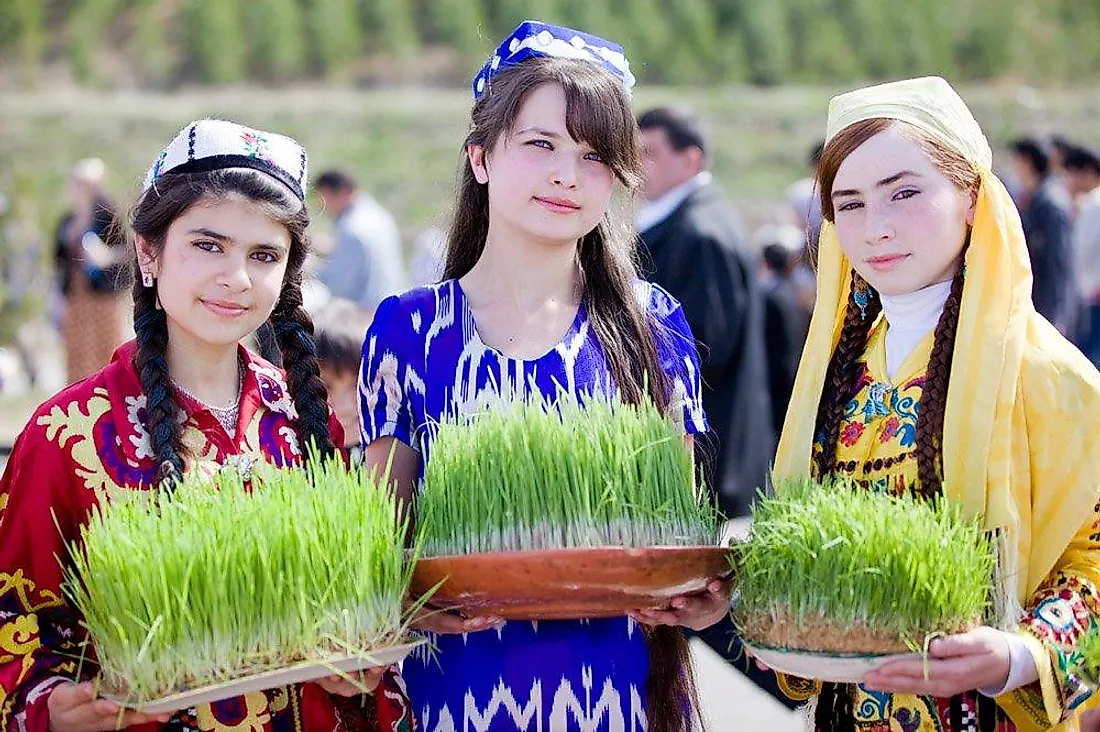The Tajik People

5. Tajik Diaspora
Most modern Tajiks are speakers of Persian languages and adherents to Islam living in Central Asia. Although historically, some followed Buddhism and Zoroastrianism. The estimated total population of the Tajik people is about 16-20 million. Tajik diaspora occurs in Afghanistan (9,450,000), Tajikistan (6,787,000), Uzbekistan (1,420,000), Pakistan (220,000), China (34,000), Russia (201,000), United States (52,000), Kyrgyzstan (47,500),Canada15,870), and Ukraine (4,255). The name Tajik became popular as a result of the Russian governance in Central Asia. Some other names associated with the Tajiks are Farsi (Persian), Farsiwan (Persian speaker), and Dihgan (farmer). Historically, the Tajiks were agriculturalist once they settled as opposed to previously leading nomadic lives.
4. History and Traditional Ways of Life
The first Tajik people came from the Oxus Basin and the Fergana Valley in Tajikistan and Uzbekistan. Some came from northeastern Afghanistan and as far as the Pamir Mountains. These areas were the areas where the first Persian migrants arrived and settled according to Richard Nelson Frye, historian of Iranian and Central Asian history. The ethnic Persians and East-Iranian Bactrians and Sogdians are also part of the ancestry of the modern Tajiks. Today, Tajiks still celebrate their traditional way of life. A large section of the Tajiks still live a rural life in rural villages near rivers or mountain slopes. Tajik settlements are usually composed of a few hundred single-family homes. In their small villages, they prefer to wear traditional costumes, but most Tajik city-dwellers prefer to wear western-style clothes.
3. Language and Religion
Richard Frye also explained that many elements contributed to the present development of the Tajiks of Central Asia. He further elaborated that the Central Asian people are only set apart by their languages but still share the same values, religion, culture, and tradition. The present Tajiks speak the eastern Dari dialect of Persian origin derived from Darbari (of royal courts). It is also known as the Tajiki language which replaced the Arabic language of the ethnic Persians in Central Asia. Although after the Russian invasion, the Tajiks were introduced to the Russian language and today the Tajik language has adopted many Russian words. However, the majority of Tajiks have kept their Sunni Islam faith. Only a small section of them adhere to the Ismaili Shia Islam faith.
2. Tajik Culture and Arts
Tajik culture and arts share similar aspects to Mongol and Iranian culture and arts. Modern Tajik people especially the educated Tajiks consider the origins of their cultural heritage as coming from their ancestors in Central Asia and the Islamic world of the eastern Mediterranean. The diaspora of the Tajik people also dictates their culture and arts as practiced today. The oral tradition of telling their history and mythology persists even today. Dramas representing the Tajik history and myths are quite common. These dance dramas are accompanied by songs and gestures that contain messages. As the hawk is their national symbol, it is used in many symbolic forms such as in their dances, songs, and music. Tajik art involves making pottery, embroidery, applique, and weaving.
1. Threats
The 23-year government rule of President Emomali Rahmon of Tajikistan has not endeared him to the people. For 23 years, the Tajikistan government has been plagued by dishonesty, mass migration, aggression, and apathy. The economic status of a large section of people has remained unimproved for a long time. Many are dependent on working relatives' remittances from abroad while some have resorted to illicit drug trafficking. External threats to the country come from Central Asian militants allied with the Taliban along Tajikistan's border with Afghanistan. Although Russia has some support for Rahmon's government, it showed concern about its abuses. Rahmon has been suppressing political rivals and the moderate Islamic Renaissance Party of Tajikistan (IRPT). Experts fear that these abuses might encourage violence from Islamic extremist groups in the country.











